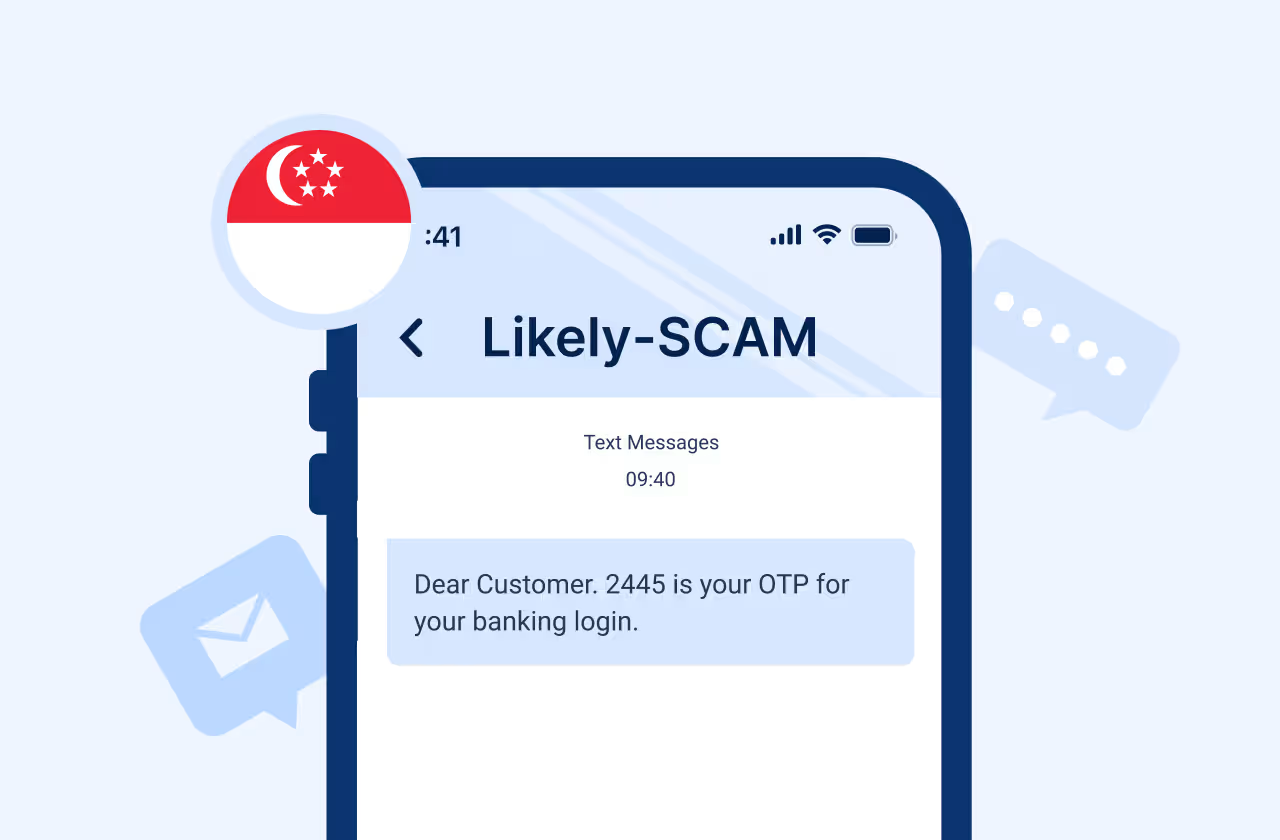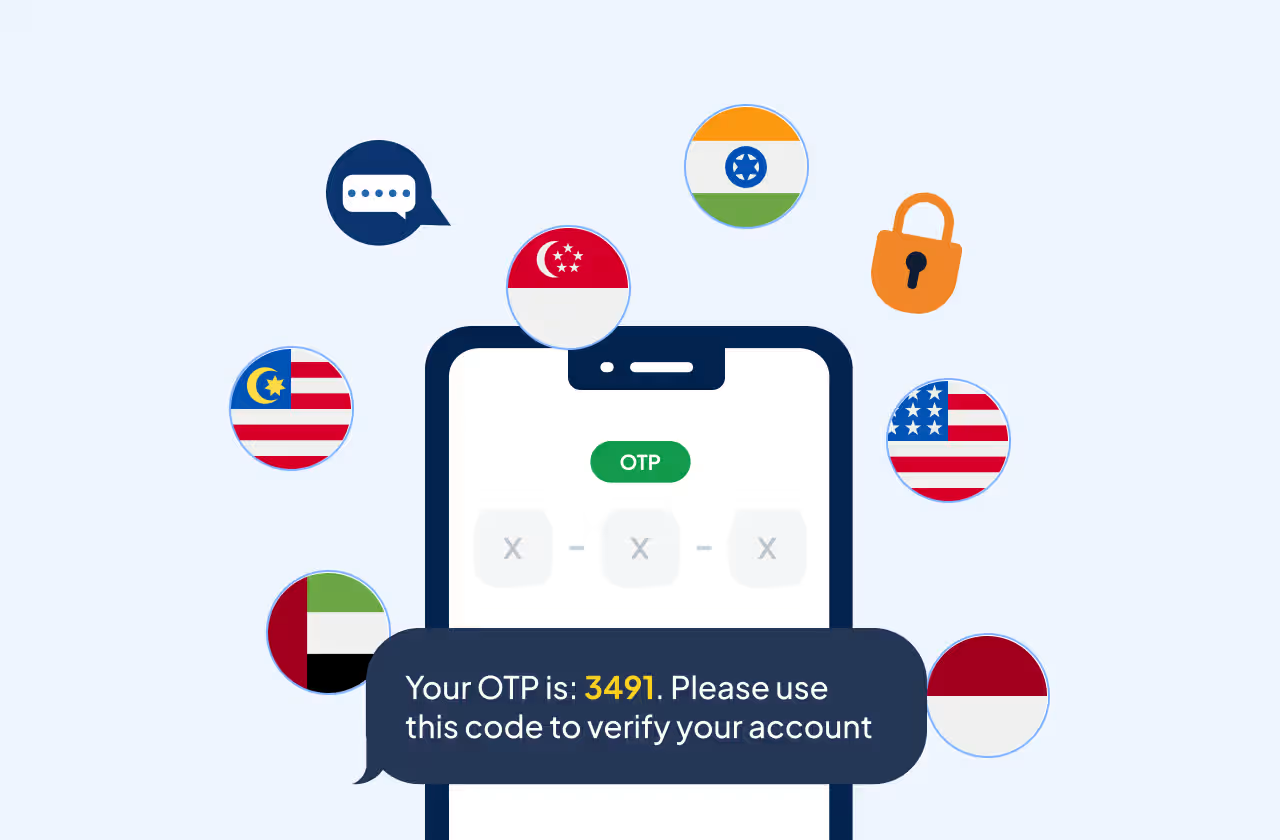Key Takeways
- Forwarding a text message through the original SMS or MMS messaging system applies to multiple use case in different scenarios
- In addition to personal use cases, there are several business situations where forwarding is used like for an organization's internal communication
- Obtaining consent and respecting privacy are some of the best practices of forwarding a text message
- There are multiple limitations of default messaging apps like lack of personalization, limited automation, limited message editing etc.
- Using bulk SMS APIs by Message Central is an alternate to forwarding text messages
With the advent of various messaging apps like iMessage, Facebook Messenger, and WhatsApp, sharing photos, videos, and texts has become faster and more convenient than ever.
Businesses have also jumped on the wagon of WhatsApp marketing, RCS (for which you sometimes receive sent as SMS via server). These platforms have been the popular replacements of classic SMS. There are use cases like user authentication for which an SMS verification service is preferred over other channels.
However, there are still many occasions where forwarding a text message through the original SMS or MMS messaging system is necessary.
In this comprehensive guide, we will explore how to forward text messages on both Android and iPhone devices, as well as the benefits of text messaging for both personal and business use.
How to Forward a Text Message on an Android Phone?
Forwarding a text message on android phone is a straightforward process. Here's a step-by-step guide:
- Open your text messaging app on your Android device.
- Select the conversation that contains the message you want to forward.
- Tap and hold the specific message you wish to forward.
- A menu will appear with various options. Choose the "Forward Message" option.
- The screen will now display the full conversation, and you can select multiple messages to forward by tapping on them.
- Once you've selected all the desired messages, tap the arrow icon in the top right corner of your screen.
- Your contact list will appear, and you can choose the recipient by tapping on their name. A checkmark will indicate your selection.
- Finally, tap the blue arrow button at the bottom right of your screen to send the forwarded message.
This is with regards to SMS. WhatsApp messages work in a whole different way. The interface is almost similar in both Android and iPhone.
How to Forward a Text Message on an iPhone?
iPhone forward text i.e. forwarding a text message on iphone is a similar process to Android. Follow these steps:
- Open the messaging app on your iPhone.
- Select the conversation that contains the message you want to forward.
- Press and hold the specific message you wish to forward.
- A pop-up menu will appear with various options. Tap on "More...".
- The display will return to the full conversation, with the selected message marked with a checkmark. You can choose multiple messages or keep only one selected.
- Tap the blue arrow button at the bottom right of your screen.
- A new message thread will open, where you can enter the recipient's name if they are in your contacts, or manually enter their phone number.
- Press send to forward the message.
Why Forward Text Messages?
There are various reasons why you might want to forward a text message. In personal contexts, you may want to share good news or funny memes with friends and family and not want to hold the message. However, forwarding text messages can also be beneficial in a business setting.
For businesses, text messages can be used for various purposes, such as
- Sending SMS messages for package arrival notifications or advertising campaigns targeted at specific customers.
- Instead of rewriting the same promotional SMS multiple times, forwarding the message can save time and effort.
- It can also be useful for internal communication among coworkers, especially when one message requires the attention or response of another colleague.
- It's important to note that when sharing messages sent by customers, consent should always be obtained to ensure privacy and compliance with data protection regulations.
Best Practices for Text Message Forwarding

To ensure effective and professional text message forwarding, consider the following best practices:
- Obtain Consent: Always seek consent from the message sender before forwarding their message, especially in a business context where privacy regulations apply.
- Edit with Caution: When editing a forwarded message, be mindful of maintaining the original message's context and meaning. Avoid making significant changes that may misrepresent the sender's intent.
- Choose the Right Recipient: Double-check the recipient's contact details to ensure the forwarded message reaches the intended person or group.
- Maintain Professionalism: When forwarding messages in a business setting, maintain a professional tone and adhere to company communication guidelines.
- Respect Privacy: Avoid forwarding personal or sensitive information without consent. Always prioritize the privacy and confidentiality of message senders and recipients.
By following these best practices, businesses can effectively utilize text message forwarding as a communication tool while respecting privacy and maintaining professionalism.
The Benefits of Text Messaging
Text messaging offers numerous benefits for personal and business communication. Here are some key advantages:
1. Efficiency:
Text messaging allows for quick and direct communication, making it easier to convey information and receive prompt responses. With an open rate between 95-99%, SMS marketing has been at the forefront of business strategy.
2. Convenience:
With text messaging, there's no need for lengthy phone calls or waiting for email replies. Messages can be sent and read at the recipient's convenience.
3. Wide Reach:
Unlike internet-based messaging apps, text messages can be received on any phone, regardless of internet connectivity. This ensures that your message reaches all customers, regardless of their device.
4. Instant Delivery:
Text messages are typically delivered instantly, providing real-time communication. This is particularly useful for time-sensitive information or urgent updates. These are called transactional SMS including any OTP SMS being sent for user authentication.
5. Cost-Effective:
Text messaging is often more affordable than other forms of communication, such as phone calls or postal mail. This makes it an ideal choice for businesses looking for cost-effective customer communication solutions.
Choosing the Right Messaging App
When it comes to text messaging, there are several messaging apps to choose from, each with its own features and functionalities.
Some popular options include iMessage, Google Messages, Facebook Messenger, WhatsApp, and more. When selecting a messaging app, consider factors such as compatibility with your device, the preferences of your contacts, and the features that are important to you.
For example,
- If you frequently communicate with iPhone users, iMessage may be the most convenient option, as it allows for seamless communication between Apple devices.
- On the other hand, if you prefer a more versatile messaging app that can be used across different platforms, WhatsApp or Google Messages may be more suitable.
Ultimately, the choice of messaging app depends on your specific needs and the preferences of the individuals or businesses you communicate with. Businesses usually prefer WhatsApp marketing. Additionally, SMS vs RCS has also become a debate.
Text Message Forwarding for Business Use
In a business context, text message forwarding can be a valuable tool for effective communication and collaboration. Here are some ways businesses can benefit from text message forwarding:
1. Internal Communication:
Forwarding messages from customers to relevant team members ensures efficient handling of inquiries, support requests, or sales leads. Businesses have also started using WhatsApp for internal communication.
2. Collaborative Problem Solving:
Forwarding a customer message to a colleague who specializes in a particular area allows for quick and effective problem-solving.
3. Distributing Important Updates:
Forwarding messages from management or HR to all employees ensures that everyone receives important updates, such as policy changes or event notifications.
4. Sharing Customer Feedback:
Forwarding positive feedback or testimonials from customers to the relevant teams or individuals can boost morale and provide valuable insights for improvement.
By utilizing text message forwarding in business communication, companies can streamline their operations and enhance customer satisfaction.
The Limitations of Default Messaging Apps
While default messaging apps on Android and iPhone devices provide basic text messaging functionality, they may have certain limitations. Here are some common limitations of default messaging apps:
1. Lack of Personalization:
Default messaging apps often lack advanced personalization features, making it difficult to customize messages or add branding elements.
2. Limited Automation:
Default messaging apps are not designed for automated messaging campaigns or workflows, which can be time-consuming for businesses that require mass messaging.
3. Incompatibility Between Operating Systems:
Forwarding text messages between Android and iPhone devices can be challenging due to the differences in operating systems and messaging protocols.
4. Limited Message Editing:
Default messaging apps may not allow for extensive editing of forwarded messages, limiting the ability to customize or modify the content as needed.
To overcome these limitations, businesses can explore alternative solutions like bulk SMS APIs, which offer more advanced features and greater flexibility in text messaging.
Exploring Alternative Solutions: Bulk SMS APIs
For businesses that require efficient and scalable text messaging solutions, bulk SMS APIs can be a game-changer. These apps offer a wide range of features designed specifically for businesses, including:
1. Contact Management:
Bulk SMS API providers enable businesses to manage and segment their contact lists, ensuring targeted messaging to specific groups or individuals.
2. Message Personalization:
With bulk SMS APIs, businesses can personalize their messages by including recipient names, personalized offers, or other relevant information.
3. Automated Campaigns:
Bulk SMS API providers allow businesses to automate messaging campaigns, saving time and effort while ensuring consistent messaging to a large audience.
4. Integration with Other Systems:
Bulk SMS APIs like Message Central offer integration capabilities with customer relationship management (CRM) systems, allowing for seamless contact management and campaign coordination.
5. Analytics and Reporting:
Bulk SMS apps provide detailed analytics and reporting features, giving businesses insights into message delivery, open rates, click-through rates, and other valuable metrics. You can track these metrics using an SMS dashboard.
By utilizing bulk SMS APIs, businesses can enhance their communication strategies, improve customer engagement, and drive better results from their text messaging campaigns.










